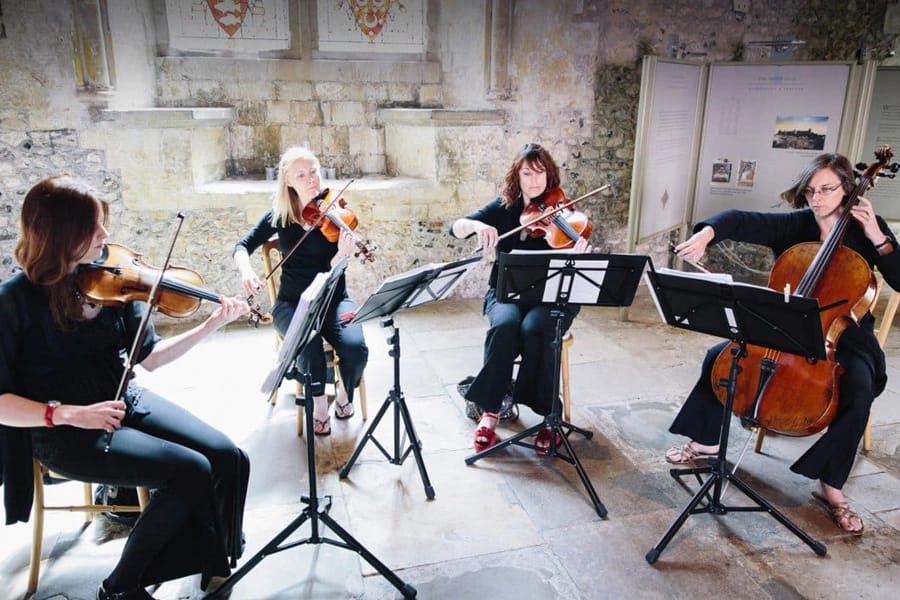
articles / Pop Culture
Musical Foursomes and Fivesomes

When you say Quartet or Quintet in classical music, you have to be a bit more specific. The most frequent instrumentation for four players in a chamber music setting is probably a string quartet – with a pair of violins, a viola, and a cello. It’s a natural combination, because each instrument has a tone that’s similar, but the ranges of each allow for the highest highs and lowest lows. It starts getting a bit more complicated when you talk about quintets…
There are quintets that feature another solo instrument, like piano, or flute, but those really are more like scaled-down concertos, with a quartet sitting in place of the orchestra. When composers keep within one section, they can choose to add another violin, or, as Mozart popularized, another viola:
Or do as Schubert did in his Quintet D.956 – and have a second cello:
You can also add a double bass to the usual quartet to strengthen its lower register.
Brass ensembles tend to be made up of five players, as a rule – although it can vary whether they play trumpets or cornets for the top two parts, and flugelhorn, euphonium, French horn and trombone can all be found in the middle – with bass trombone, or most frequently, a tuba providing the support on the bottom. But although each has a slightly different sound, they’re all essentially variations within the same brass family. The woodwind quintet, on the other hand, celebrates the differences in its instruments. As seen in the video below of Carl Nielsen’s Wind Quintet: the flute, which is made of wood or metal and blown across a mouthpiece, the two double-reeds oboe and bassoon with a French horn between – not a woodwind at all, and the single-reed clarinet. Together, despite their differences, they make up a miniature wind section, and blend beautifully, while each line keeps its distinctive timbre:






